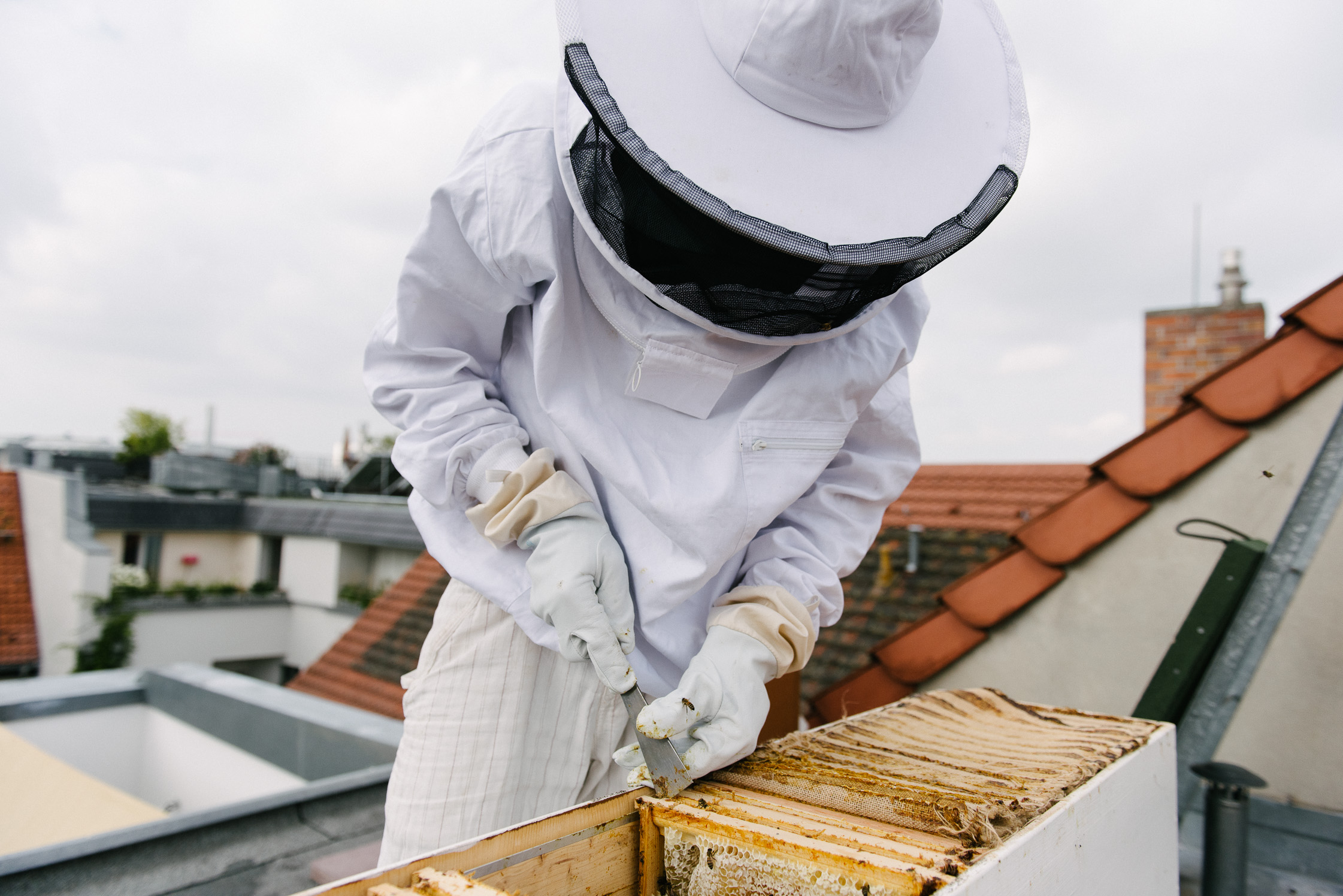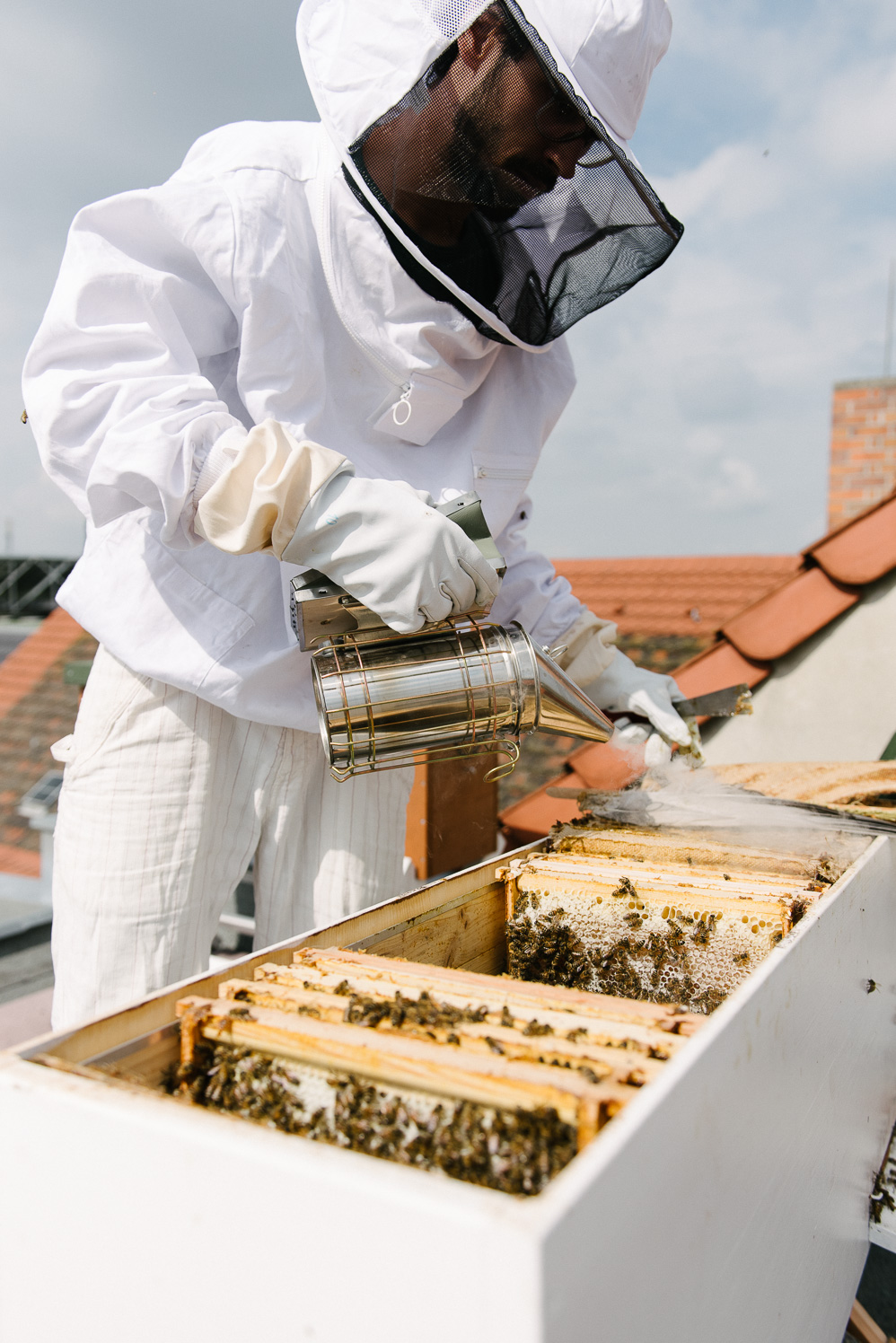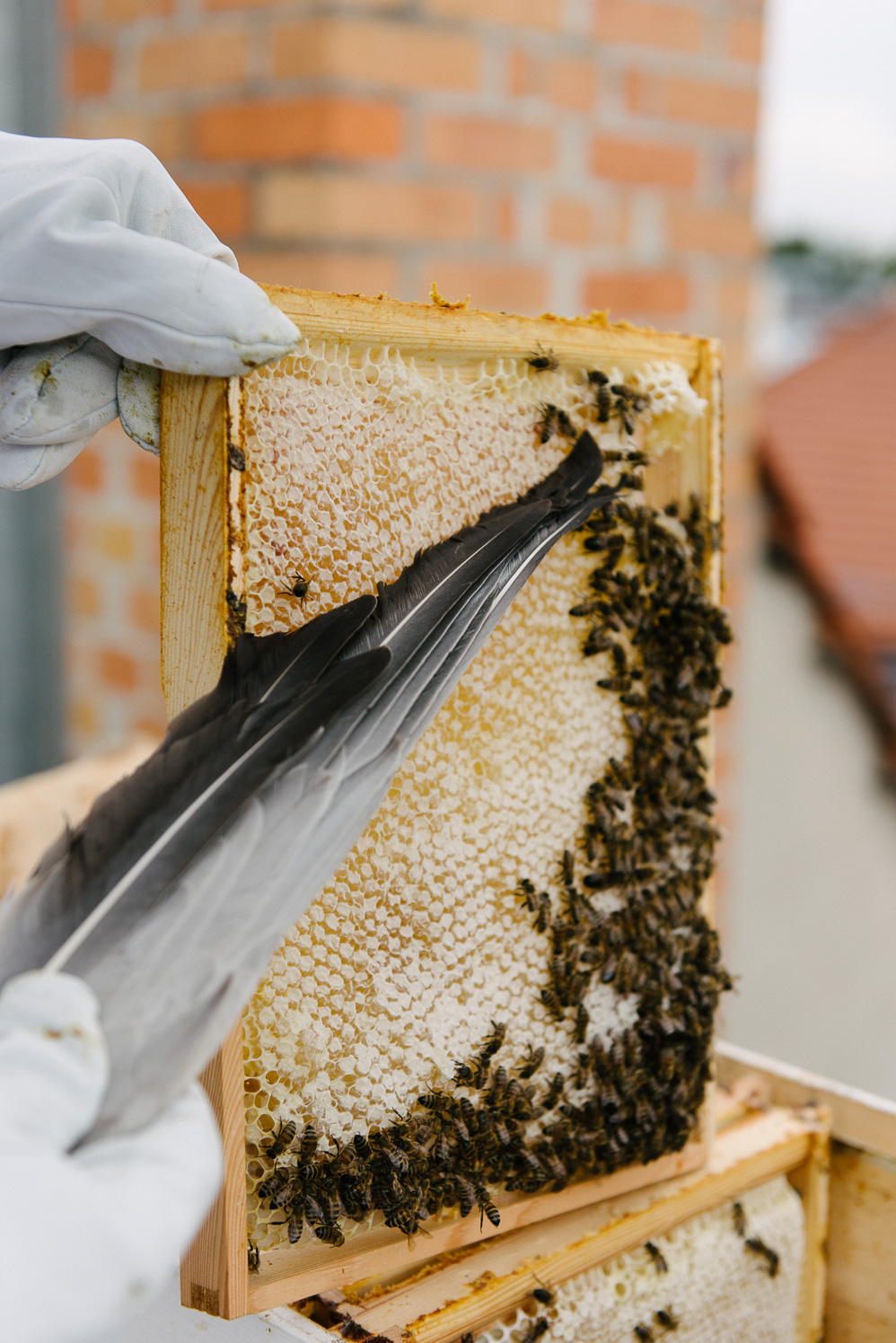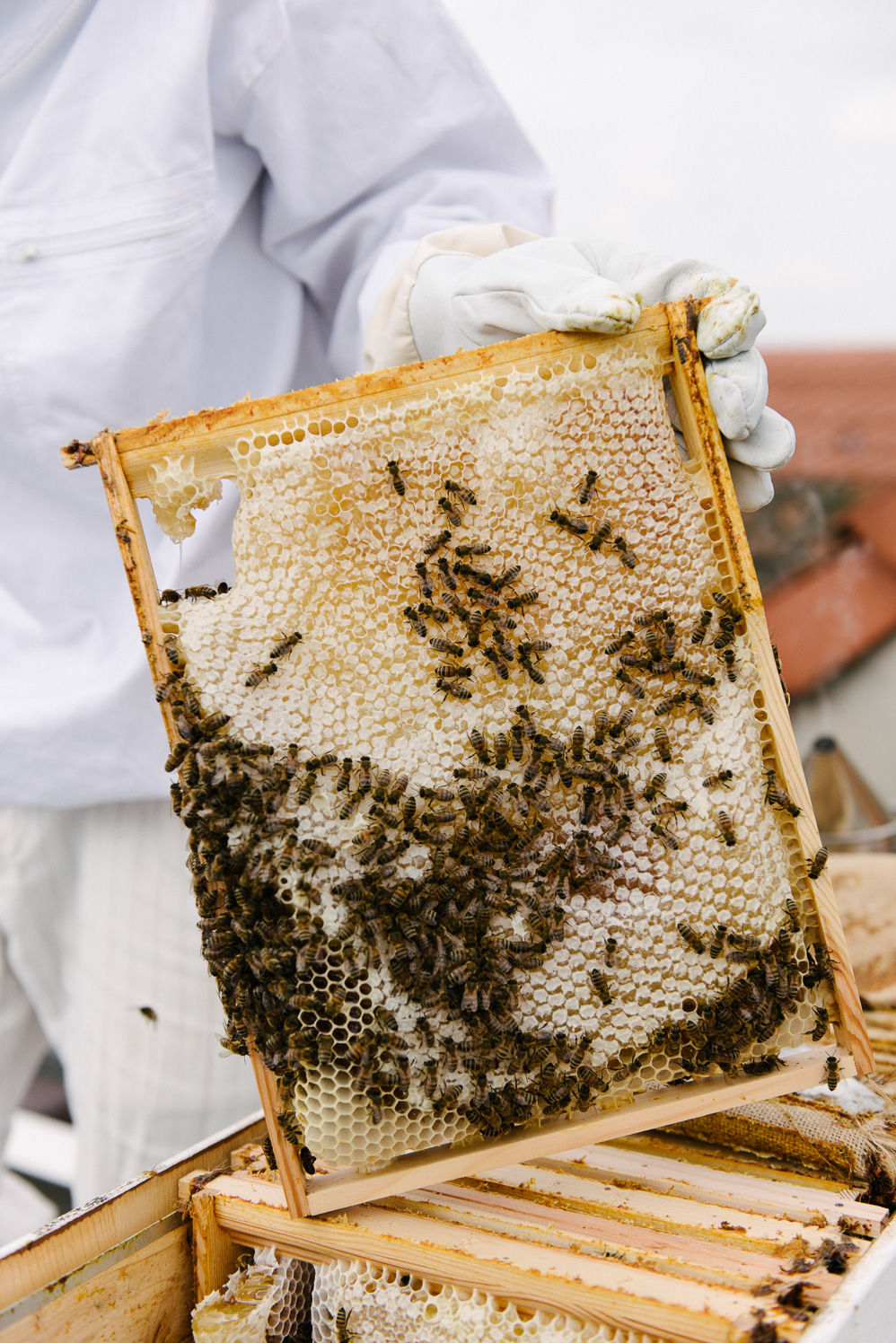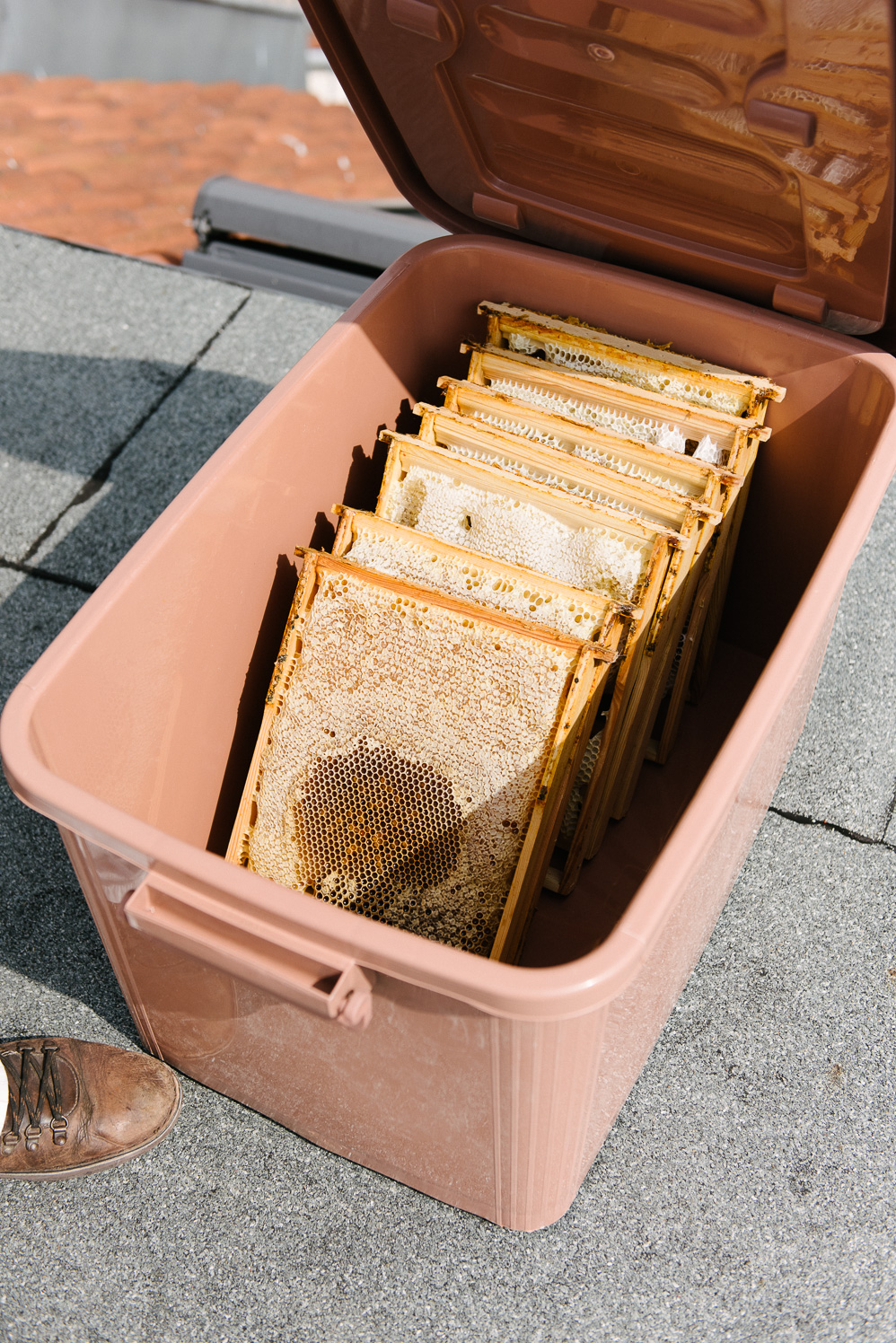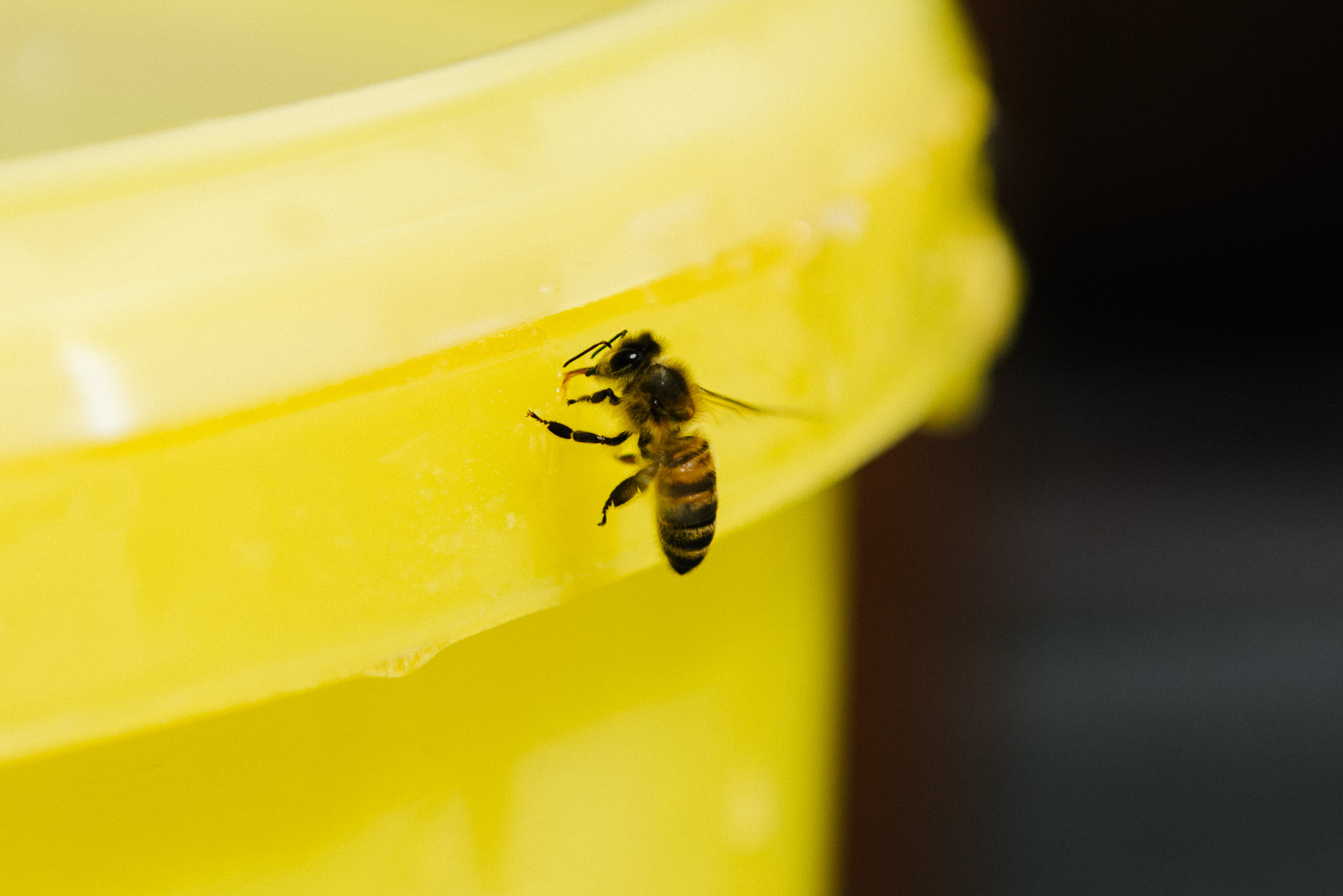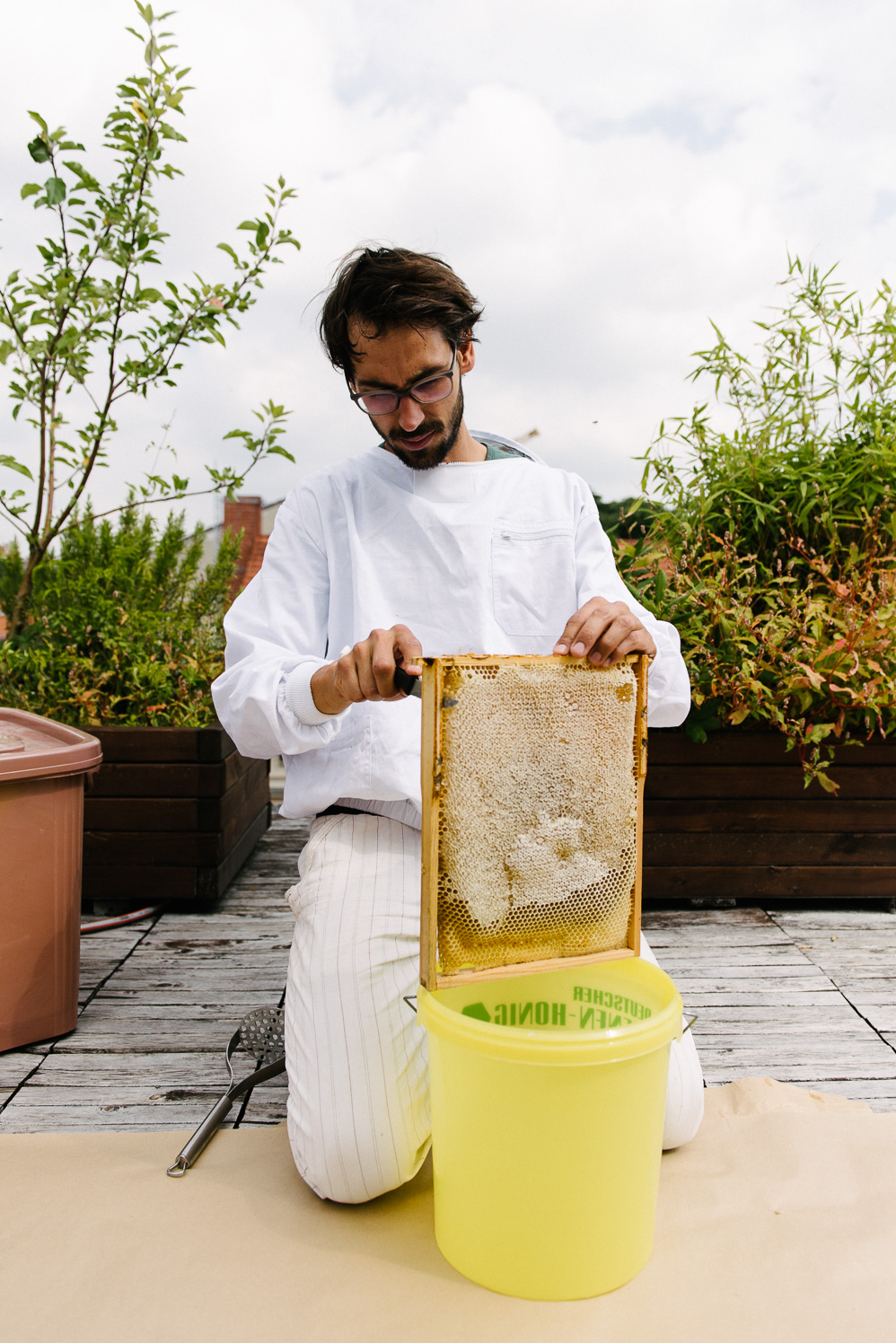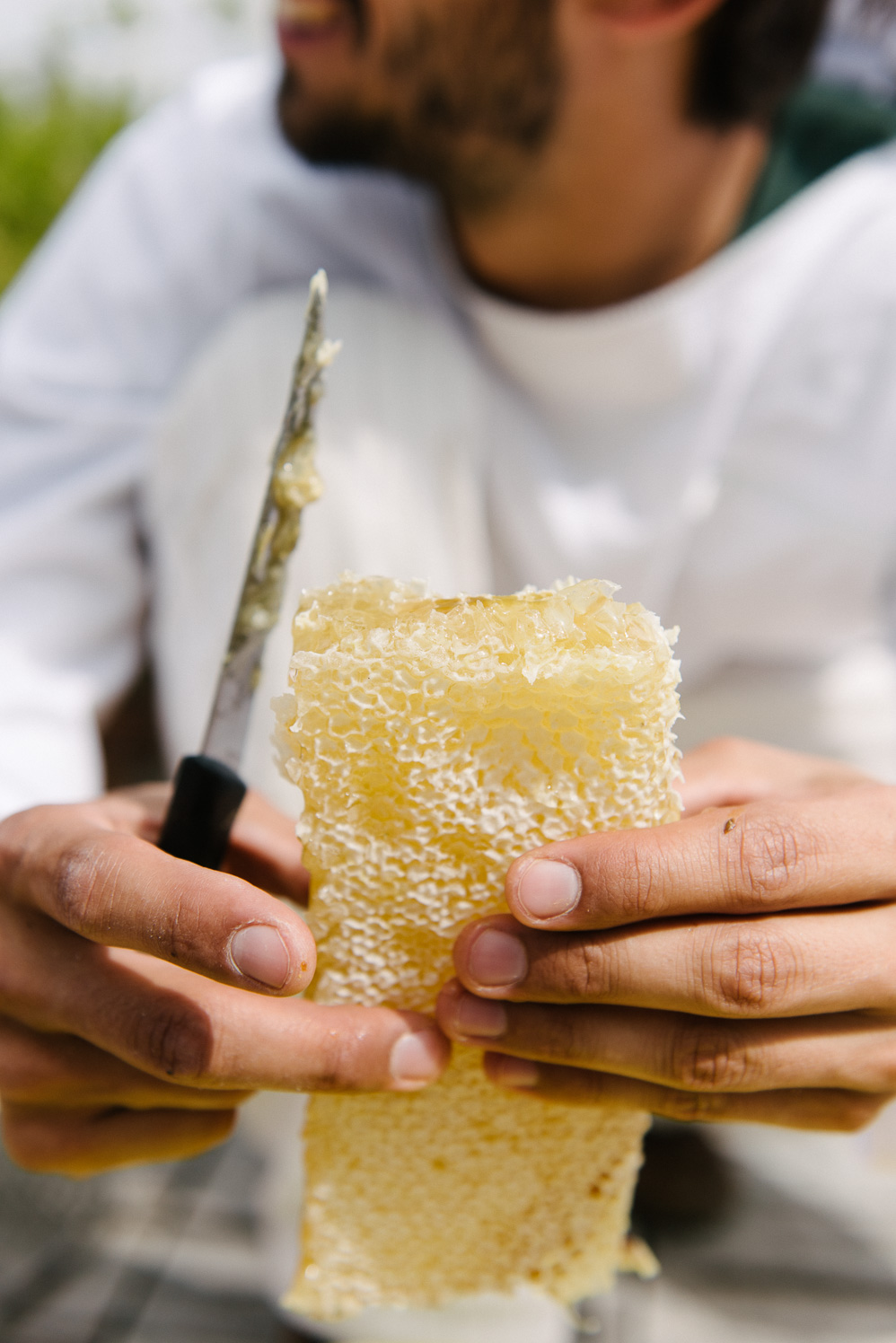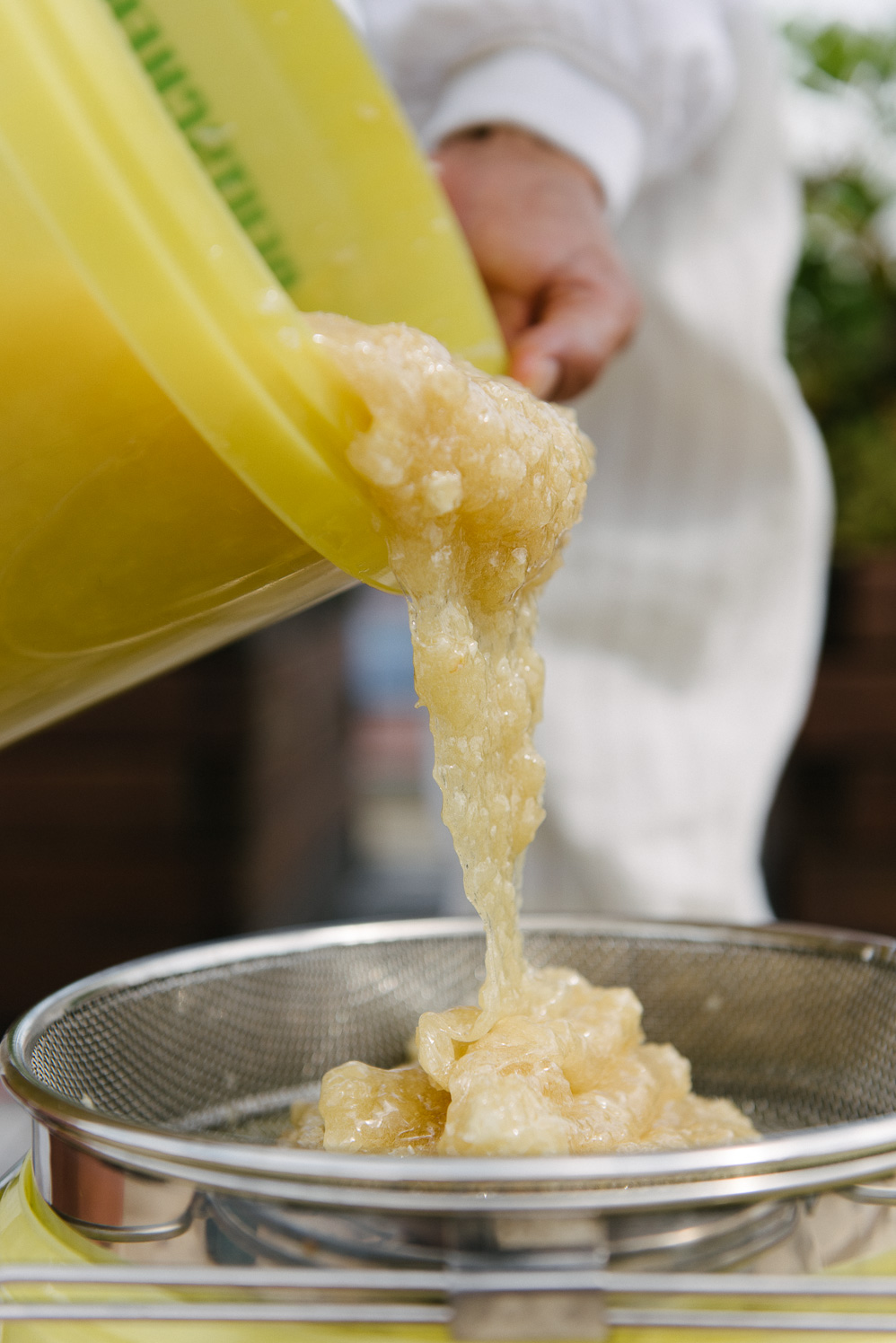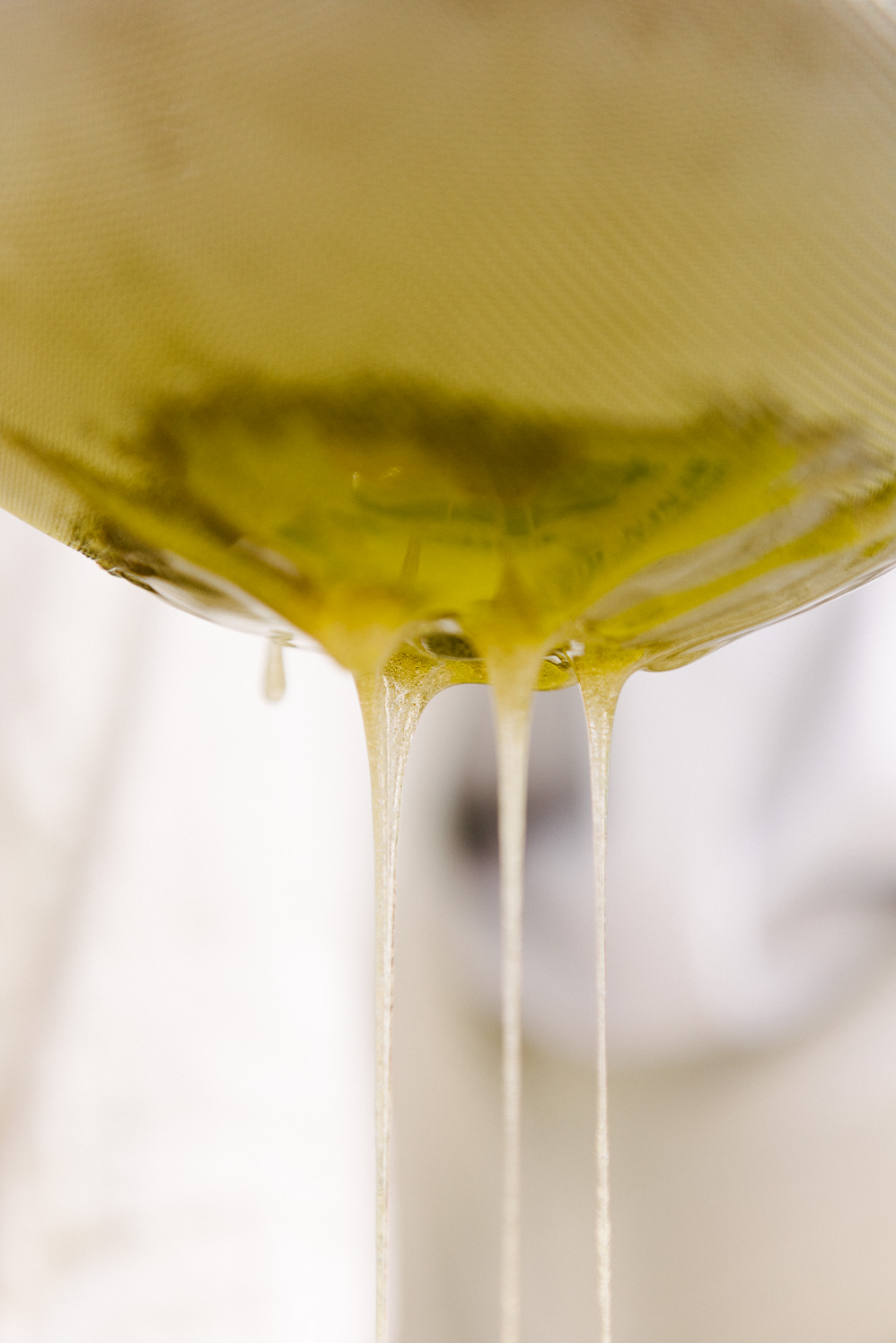“The little bee returns with evening’s gloom, To join her comrades in the braided hive, Where, housed beside their might honey-comb, They dream their polity shall long survive.” — Alfred Tennyson
Bees have long been entwined with literature. From Tennyson and Tolstoy, who narrates the discordant disorder of a queenless hive in War and Peace, to Sylvia Plath’s series of bee poems written after she took up beekeeping in the summer of 1962. But for all their literary mentions and romanticized descriptions of spiritous buzzing in the summer haze, the common honey bee is still widely misunderstood.
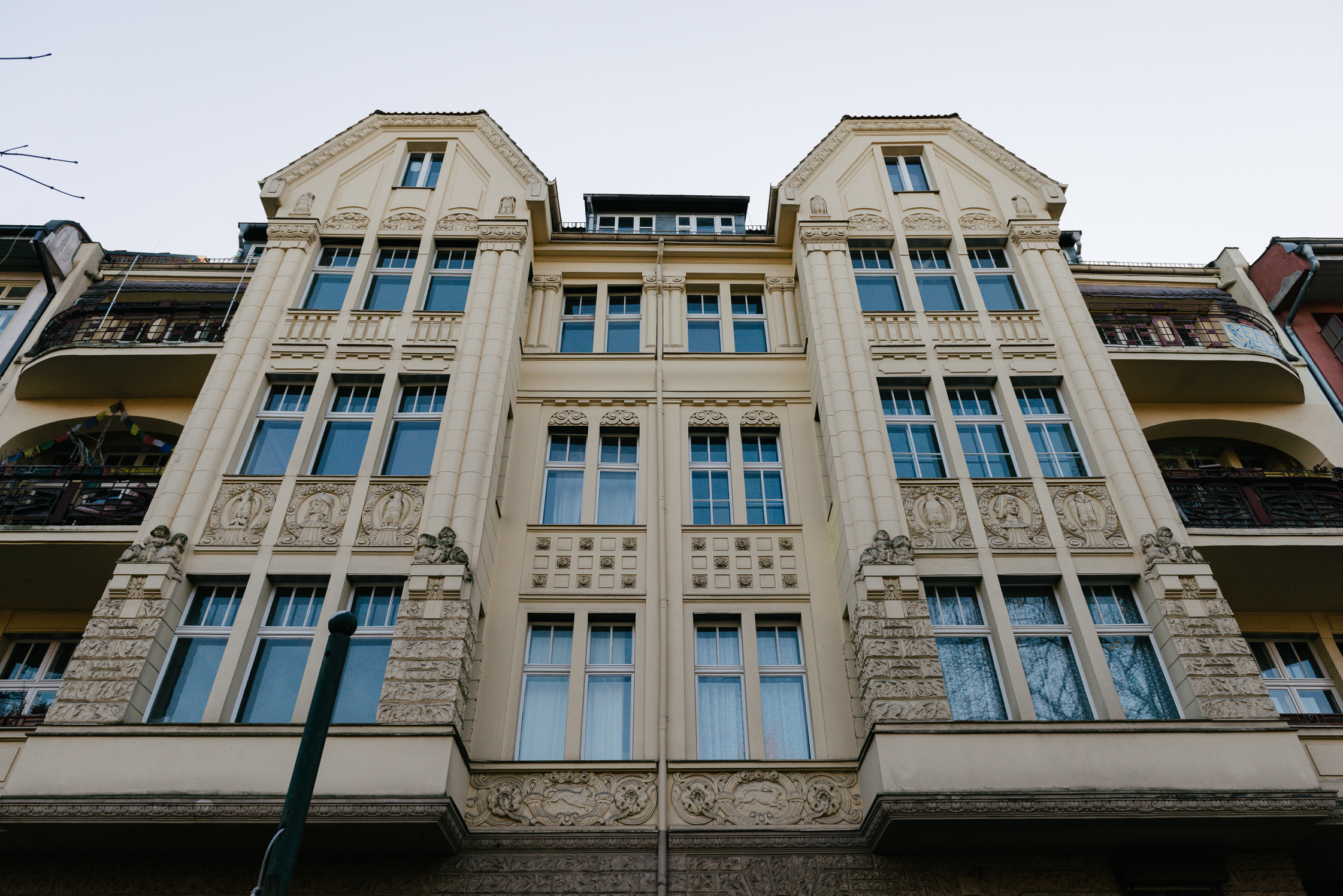
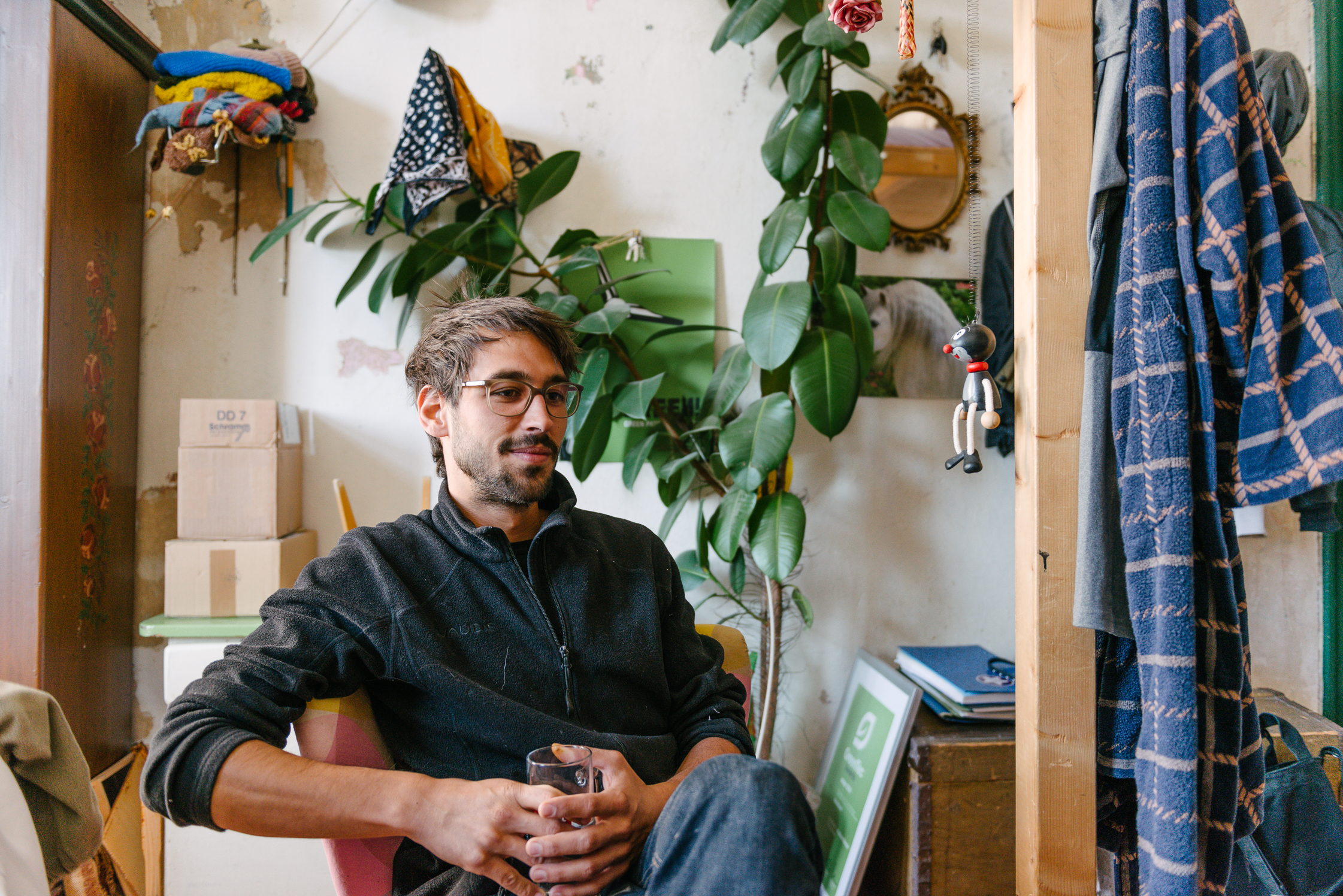
“Often people are afraid of them,” says Berlin-based urban beekeeper Johannes Weber. “They don’t have the knowledge, sometimes they don’t recognize a bee from a wasp, and more often than not people think bees will attack them.” Johannes is keen to change this misconception and encourage new beekeepers in the city with his company Stadtbienen. “My grandfather was a beekeeper with a fruit farm in southern Germany so it was quite normal for me to be around bees and I guess because of that, I was never afraid of them.” Moving to Berlin nine years ago, Johannes established his own urban rooftop garden. He quickly realized he needed to balance the vegetables and fruit he was growing with some natural pollinators. “When I started planting, I remembered everything my Grandpa had taught me, so the garden was the main reason I began my research into beekeeping in cities.”
“The big advantage is that it’s easier to keep bees in cities than in rural areas because of the biodiversity.”
More than half the global population live in urban areas, a proportion that is steadily increasing year after year. This, combined with a heightened attention on where our food is coming from and an increased awareness of the threats posed to bees (habitat loss, pesticides, and colony-collapse disorder being the main factors) has resulted in an encouraging escalation of urban beekeeping. Berlin is just one city where there has been a noticeable increase in the popularity of apiculture. And, perhaps surprisingly to the uninitiated, bees are far better off in urban environments than the countryside. “The big advantage is that it’s easier to keep bees in cities than in rural areas because of the biodiversity,” explains Johannes as he puts on his white bee veil before checking on his excitable bees for the first time this year. “In the countryside, you have to move your bees. This is because the area might be just one crop whereas cities have various flowers and a constant blossom time.” Monoculture will only gives bees on average five weeks of pollination time and if you don’t move them, they simply won’t survive. “Agricultural areas have such vast fields—bigger than a bees flight zone, but in the city the hive can stay in one place as the bees can find everything they need.” Proof of this is in Johannes own hive as he lifts out the frames to demonstrate. “You can imagine that the hive is a concentration of the whole environment and the different frames are a kind of spectrum for the various blossom times. You could pull out one frame and see, ‘Ah, this was the hazelnut blossom time,’ and another time in the year you might see linden and cherry and you would see a different color gradient and diversity of flavor if you taste it, too. If you compare that to honey you see in the supermarket that has the same color and same taste all the time…you really start to realize how bad the supermarket varieties are!”
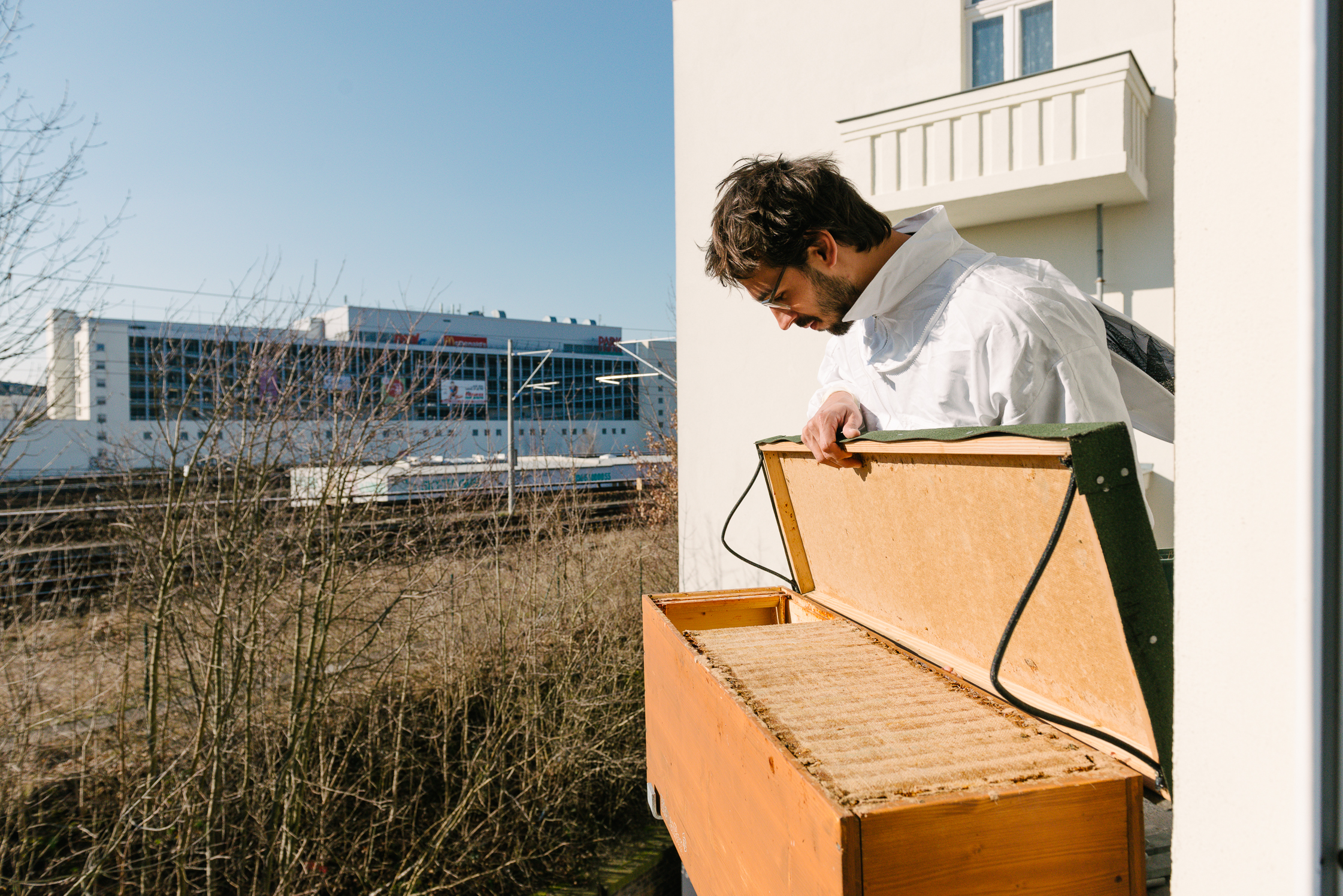
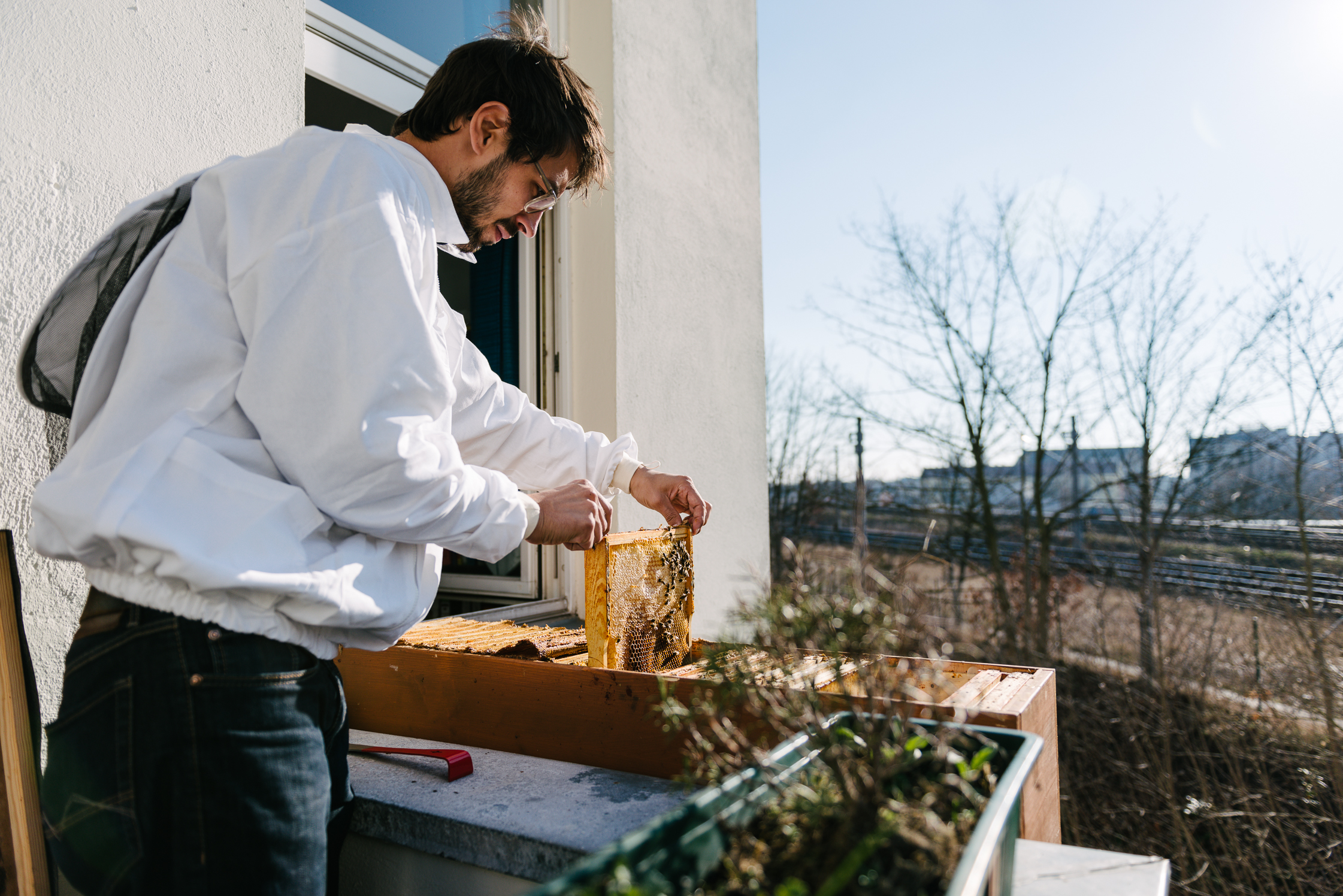
Bee Sides
-
- 1 Honeybees fly at 15mph
- 2 They visit 2 million flowers to create just 1lb of honey
- 3 A single hive contains approximately 40,000-45,000 bees
- 4 Bees possess five eyes
- 5 Honeybees communicate with one another by ‘dancing’. This tells other bees the direction and distance of flowers
- 6 A worker bee will produce 1/12th of a teaspoon of honey over the course of her life
- 7 Bees cannot recognize the color red
- 8 Honeybees pollinate one third of everything we consume
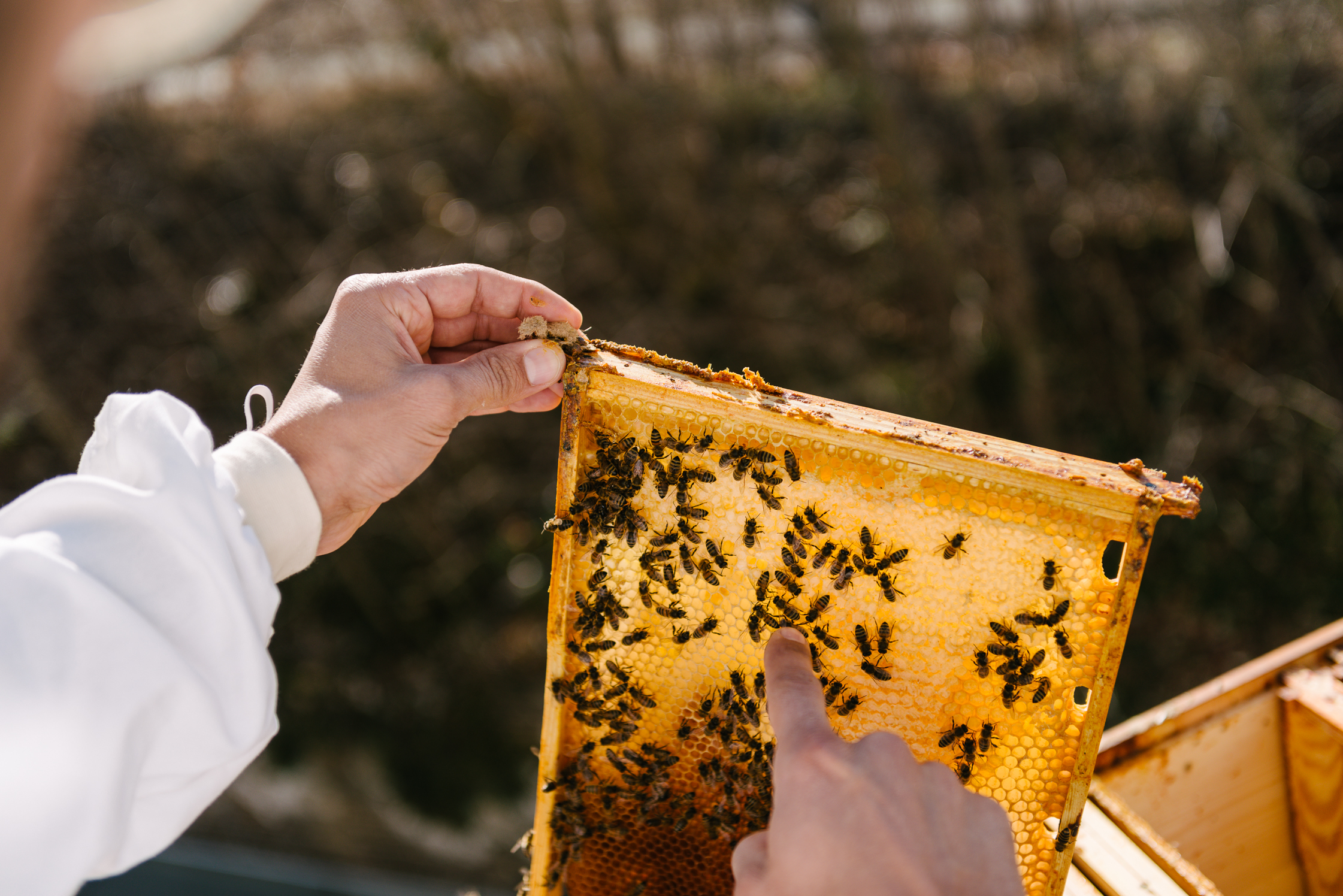
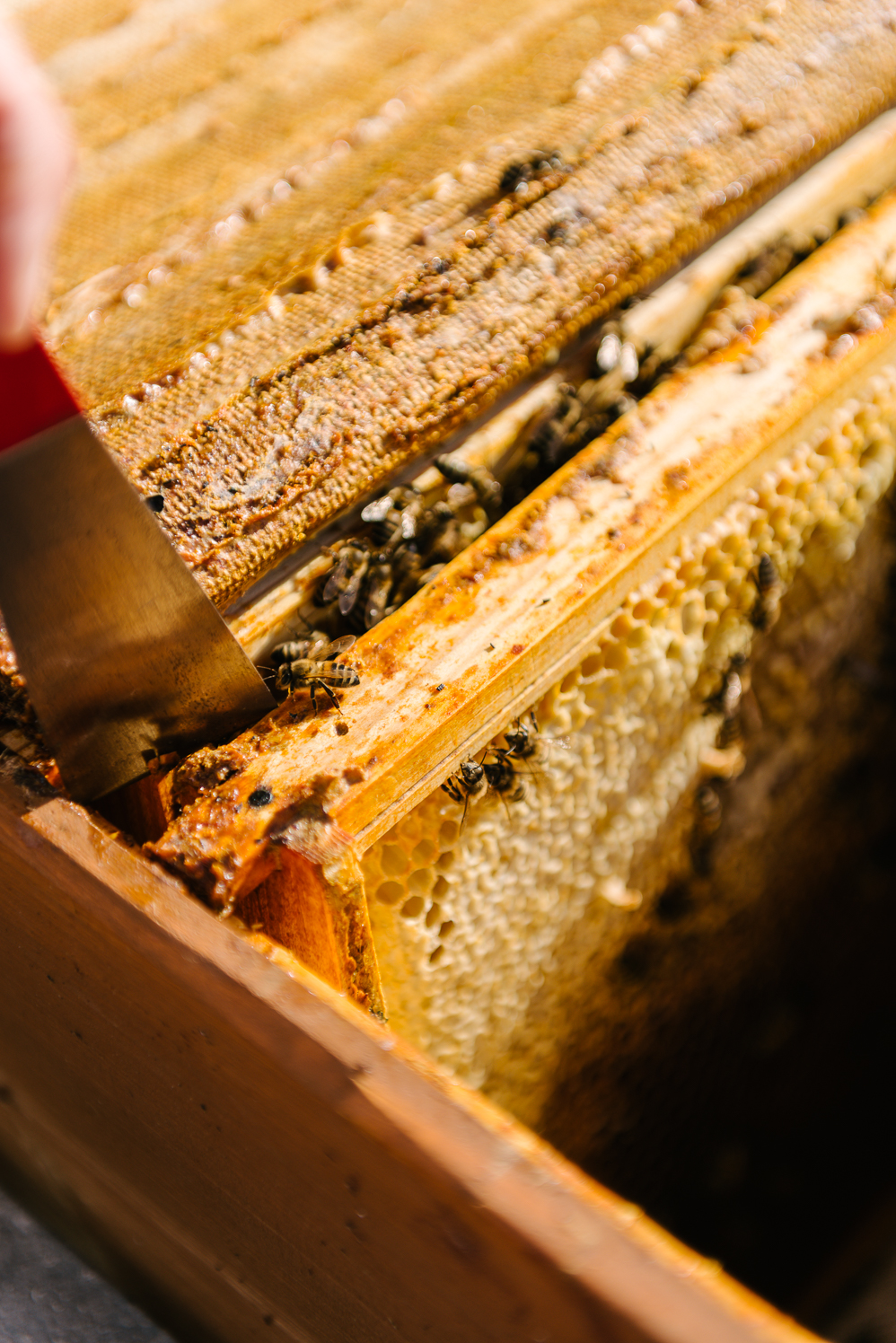
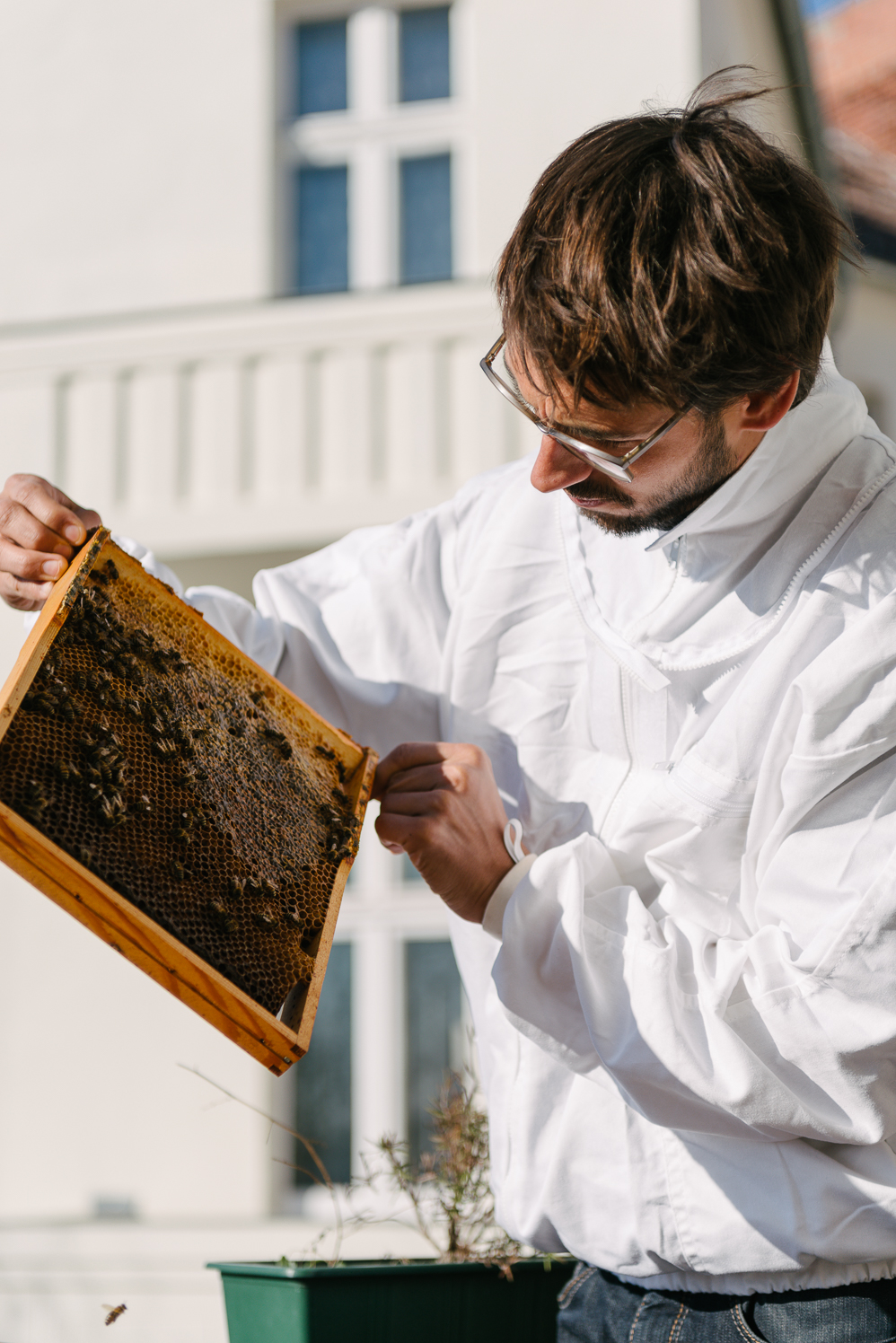
One year into his self-described meditative beekeeping practice, Johannes had a catastrophic setback. “Our outdoor space wasn’t approved by the landlord so we had to remove everything and were no longer allowed to use our nice garden anymore,” he says, glumly. “The garden was one thing but then we had our beehive, which we desperately needed to put somewhere else. The last space I had was the balcony!” This unfortunate turn of events led Johannes, with his deft sensibility, to set about creating a hive that would fit on his balcony. “I already had a lot of improvements I wanted to make from my first hive, so when it came to creating something fit for the balcony I wanted to ensure it had moveable frames that were small enough to handle and a flexible system that I could move from my roof to the balcony and, after five years or so, to the garden. You can use the BienenBox [bee box] in all these places.” Johannes built his first prototype, adapting and updating it after constant discussions with other urban beekeepers on their own learnings to develop a box that was flexible, sustainable, and humane.
“I published my idea for these bee boxes about four years ago now,” says Johannes, while checking on his bees, without, it turns out, the need for gloves. “I just wanted to tell people it’s possible, you know? We had construction plans, which we also published and people started to follow and build their own bee boxes and I began to realize there was interest.” Johannes received a scholarship awarded to people who have an idea to solve a social or environmental problem. It was during this time of research that he established the association Stadtbienen. With a fully developed concept and physical product, he quickly exceeded his target crowd funding goal, which allowed him to improve on both the BienenBox and the production process. “It became clear early on that this was something people wanted and we were able to start production locally with BWB [workshop for disabled people in Berlin].
Johannes checks in on the FvF rooftop hive
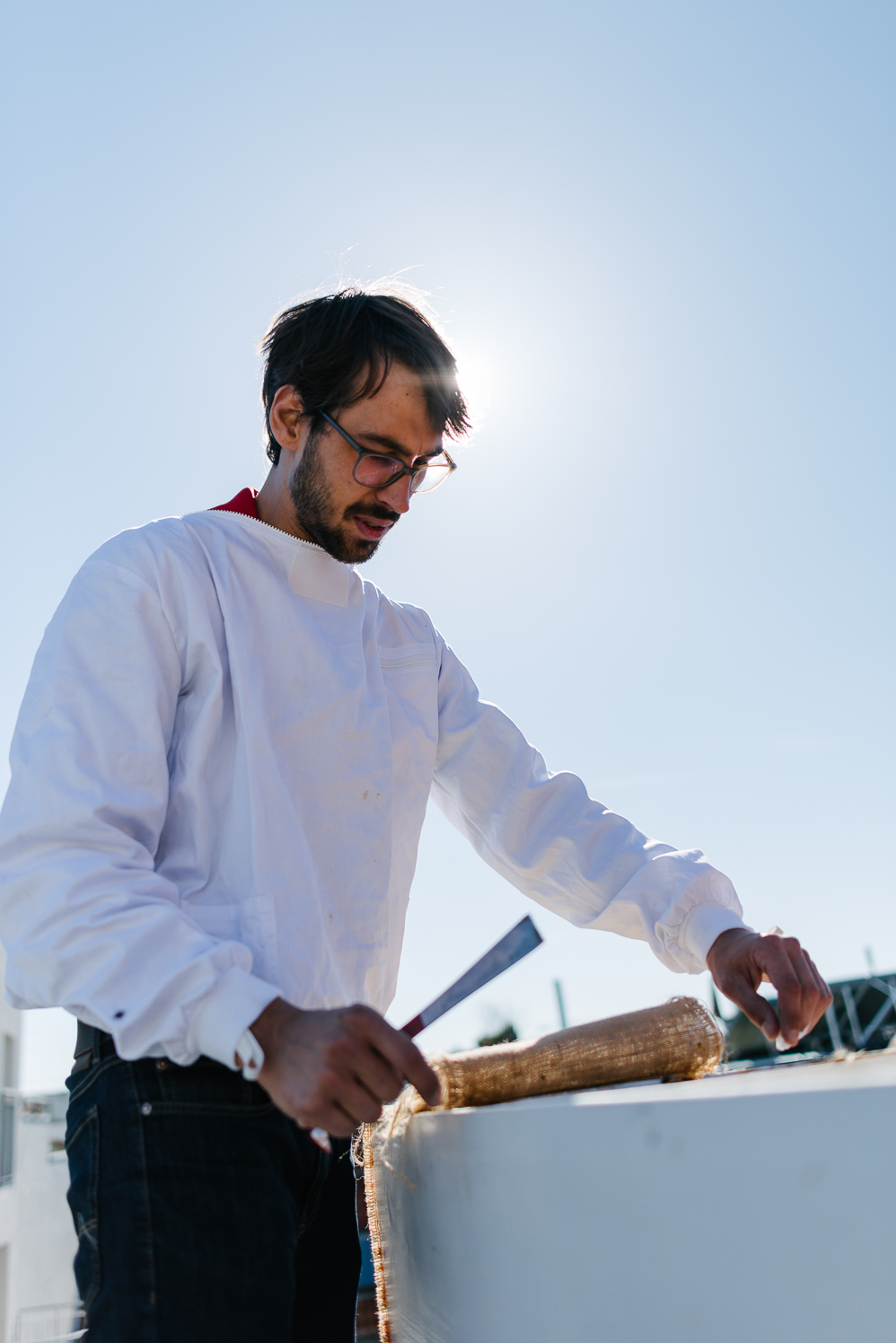
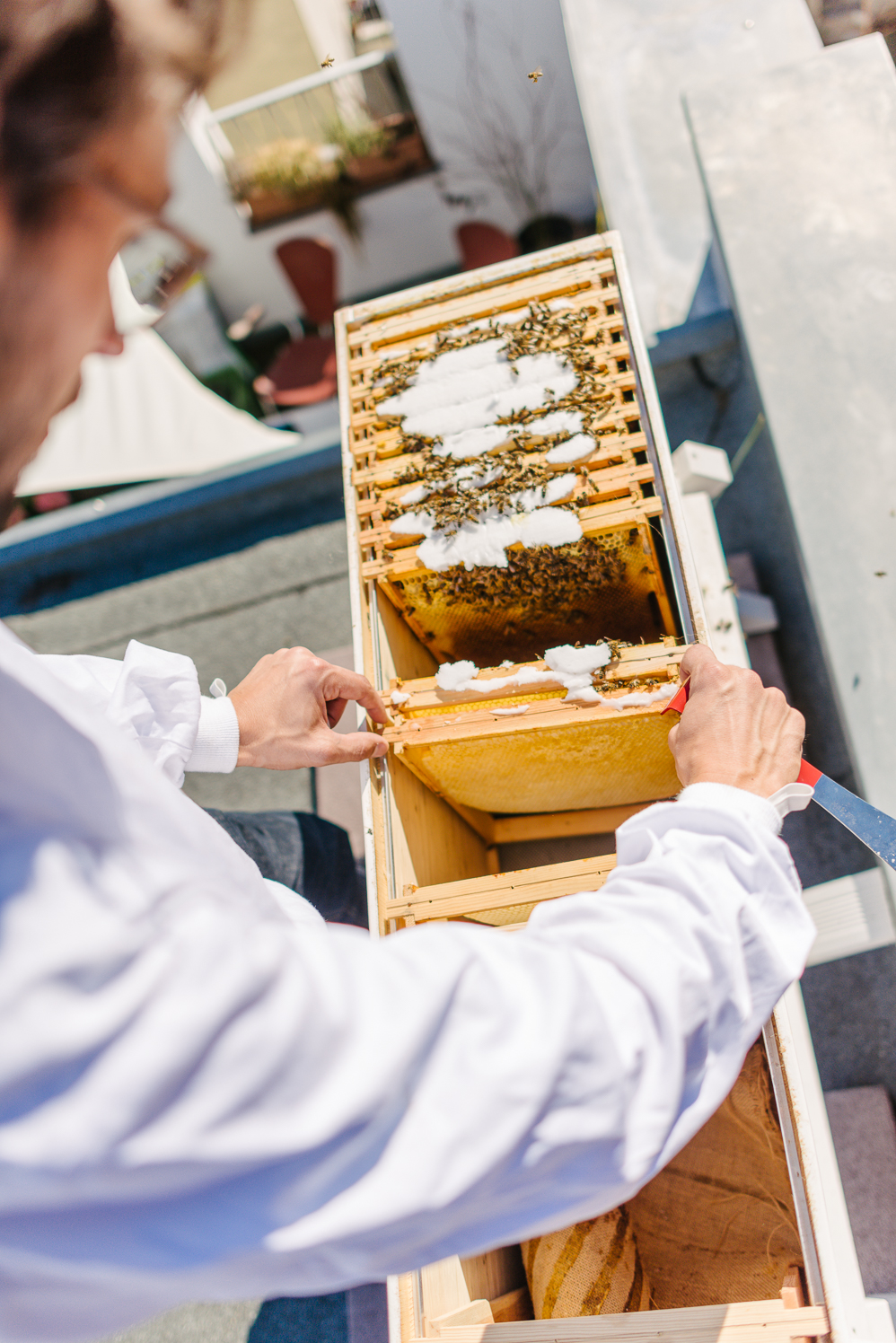
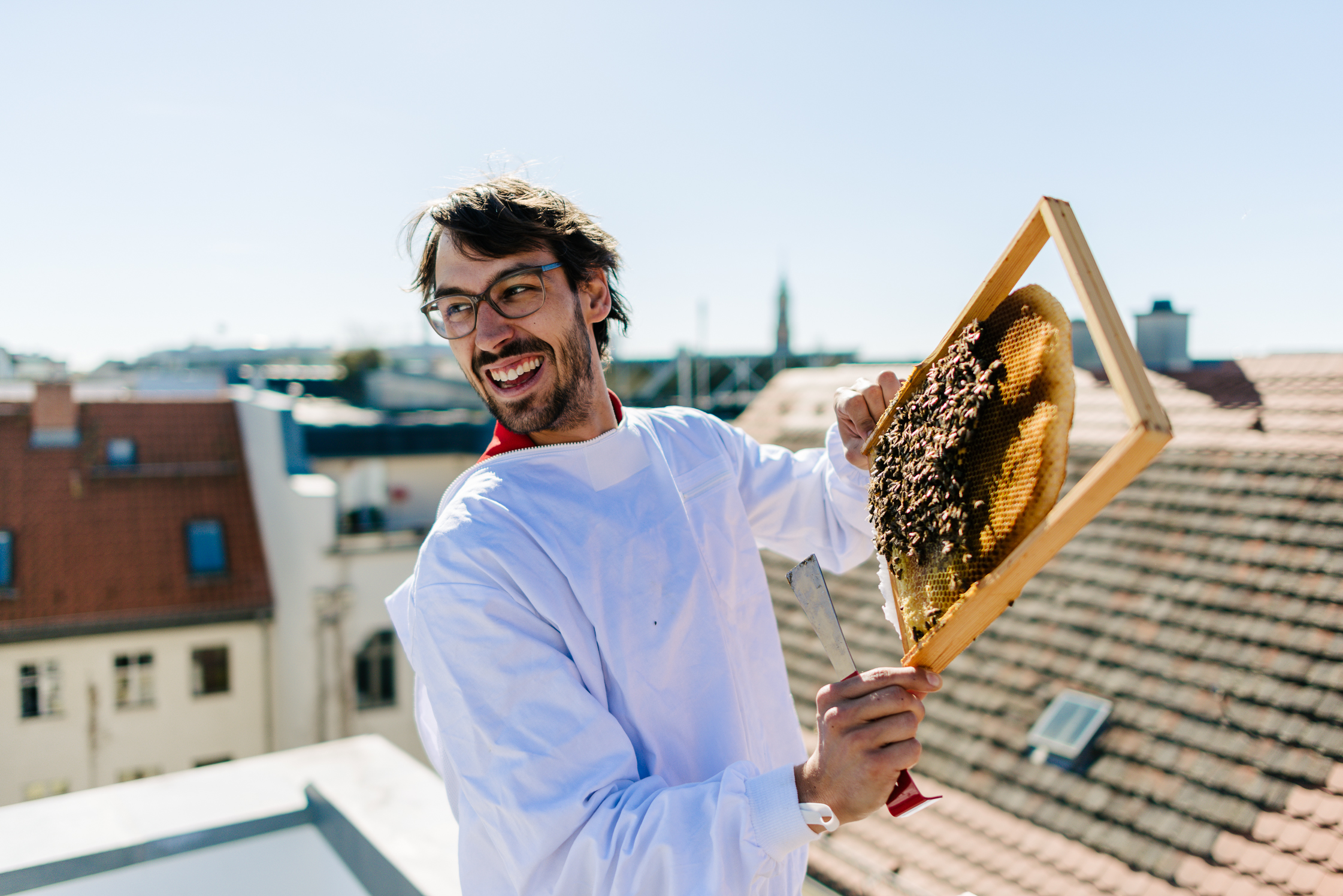
“Of course, I can write a lot and show videos but it’s really a hands-on education that you need.”
Stadtbienen now have over 400 balcony boxes across Germany, Austria, Switzerland, and Norway. Part of the Stadtbienen approach is to provide an online community where fellow beekeepers can ask for advice, request a swarm, and simply connect with other urban beekeepers, beginners or established. “Traditional beekeeper associations sadly aren’t always up-to-date and we want to create this tool as a new association on the web,” he explains. “Of course, I can write a lot and show videos but it’s really a hands-on education that you need.” Part of Johannes’ invested approach includes regular workshops where he can show in-person how to harvest the honey, how to apply treatments, how the bees are reproducing, and how you can handle it on the balcony or rooftop.
Johannes workshops often take place on our FvF rooftop where we proudly nurture our own bees during their life cycle. May is the busiest month of the year when the bees separate. During this time, it’s not uncommon to find Johannes dashing on his motorbike to the SOS call of a local beehive owner when there’s a swarm. The most recent of which was none other than the BienenBox that has made its home on the rooftop of the FvF building. “The bees breed their own queen and the old queen moves out with half of the bees and they build a swarm. There are some techniques for how to handle it but in the end you’re going to have a new colony, which you can give to another beekeeper so they can put them into their hive,” explains Johannes. By July, the golden elixir of honey is ready to be collected. “Most beekeepers harvest all the honey and then give sugar water to the bees, which they eat in the winter. We only harvest the surplus, actually, and this is what we teach in our courses, too. How to keep bees ecologically and humanely so they can feed off their honey through the winter. We believe they should build their own combs instead of some timesaving techniques and we let the queen live out her life [up to four years] instead of killing her after two years just because performance is reduced.”
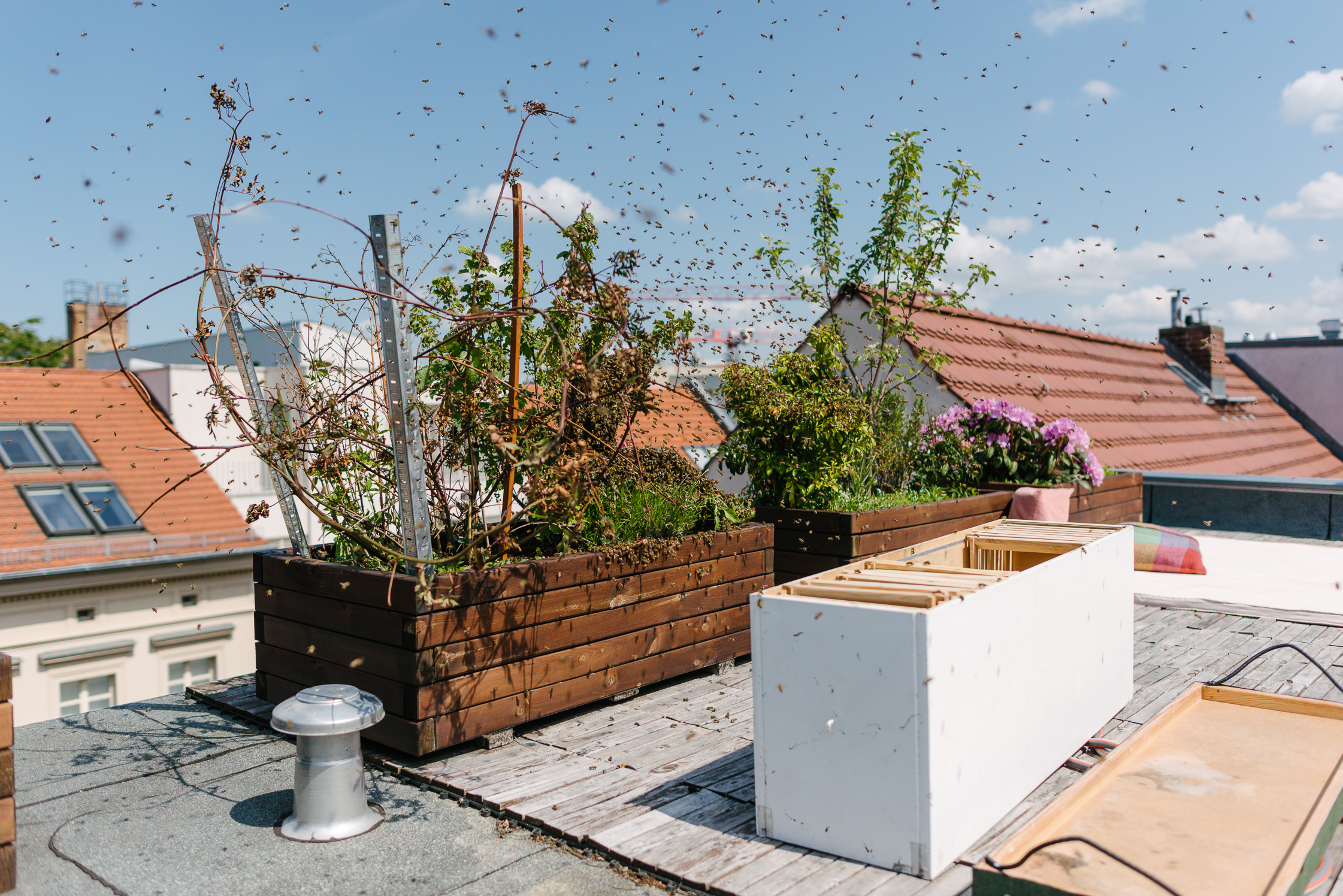
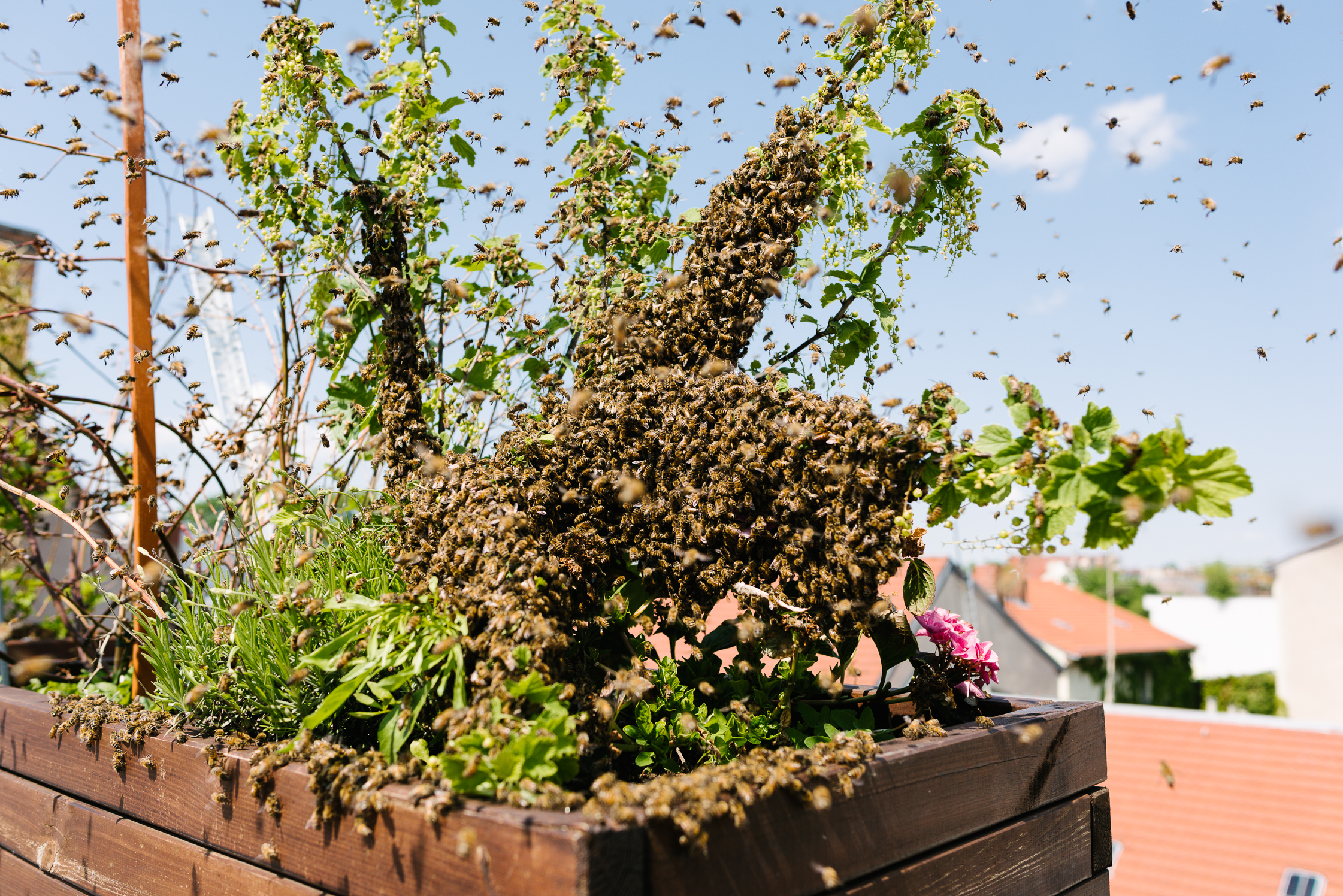
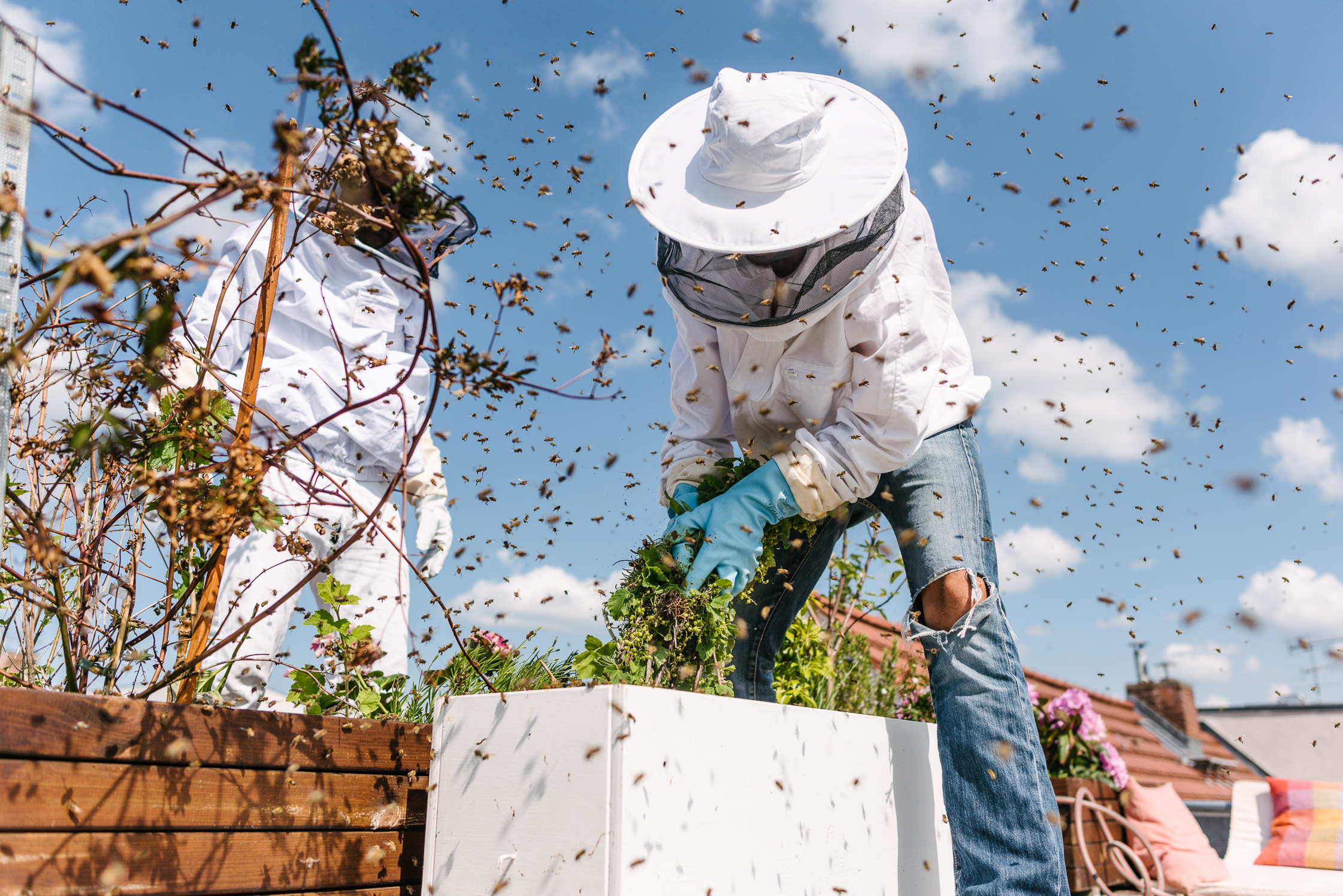
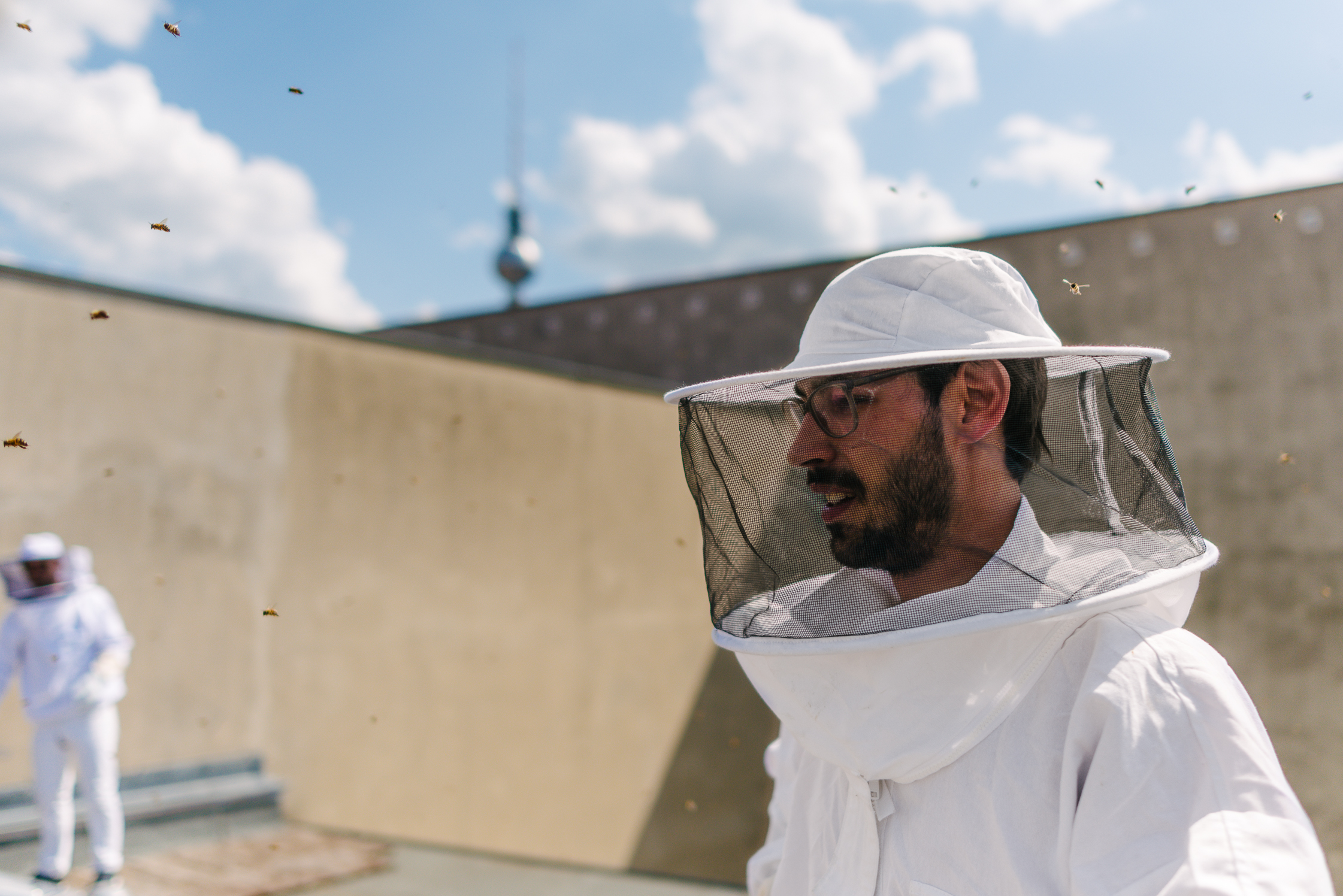
“Ultimately for me it’s the best combination of passion and doing my part for the environment. It makes sense for the world out there and I also love it.”
Johannes’ sustainable efforts extend to modern energy initiatives, too. As a trained engineer, his main profession takes him to Liberia where only ten percent of the population have access to electricity. “All energy supplies which are off grid are exciting for me. And there are some parallel things to the bees such as the social impact and self sufficiency element,” he explains. “Ultimately, for me it’s the best combination of passion and doing my part for the environment. It makes sense for the world out there and I also love it,” he enthuses. “Some people meditate or do yoga twice a week, for me it’s seeing the bees and following the whole year by how they feel out in nature—you really learn something about what’s going on out there.”
Harvesting the FvF Honey
